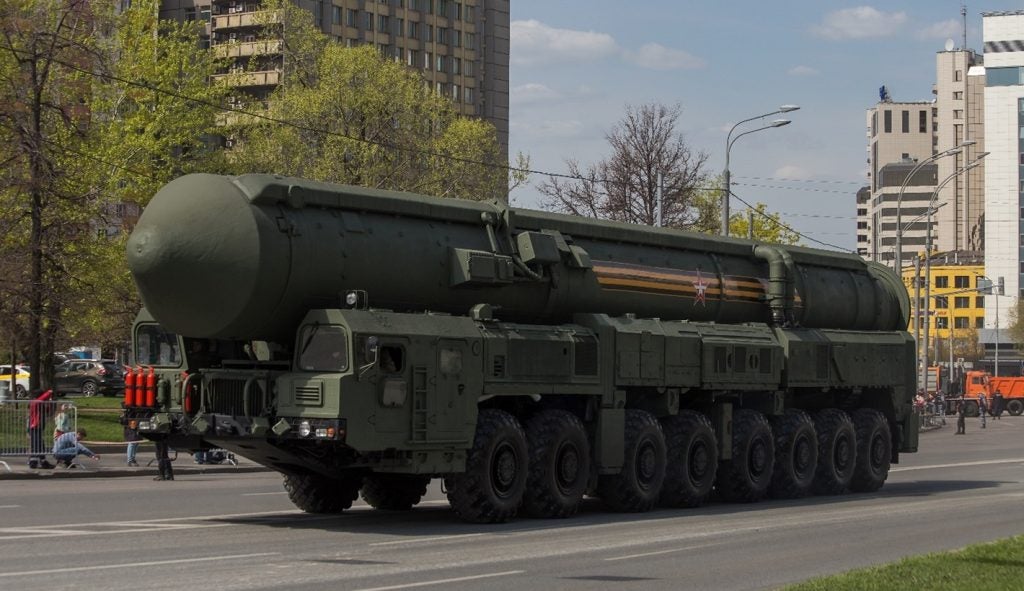Russian forces are said to have launched an intercontinental ballistic missile (ICBM) besides a range of other rockets in an attack on the city of Dnipro, Ukraine in the early hours of 21 November, officials from the Ukrainian Air Force Command intimated.
However, a US official revealed to Army Technology that the unidentified missile was actually an Intermediate Range Ballistic Missile (IRBM).
It is believed that the weapon was launched from the Astrakhan region in the south of the Russian Federation. The US government spokesperson added that Russia likely possesses only a handful of these experimental missiles.
Ukraine has withstood countless attacks from Russia, including from missiles with significantly larger warheads than this weapon. The official added that the US had briefed Ukraine and close allies/partners in recent days about Russia's possible use of this weapon to help them to prepare.
This new weapon, they assured this reporter, does not represent a game-changer in this conflict.
At present, there are no precise, public details about the new missile and the use of the weapon requires further analysis. An investigation is currently ongoing according to Ukraine’s Ministry of Defence (MoD).
In a post on the social media platform X, the MoD suggested that the weapon is “a new Russian missile” and that “all its characteristics – speed, altitude – align with those of an ICBM.”
A new Russian IRBM
“There’s debate as to the nature of the missile (ICBM or IRBM),” GlobalData defence analyst Tristan Sauer noted, “but the political objective is, in my opinion, much clearer.
“The use of a weapon with Multiple Independent Re-entry vehicle (MIRV) capabilities, usually reserved for weapons with nuclear payloads, is aimed at generating debates over Russia's potential use of tactical nuclear weapons in Ukraine.”
“This follows on from Putin signing a new nuclear doctrine earlier in the week, more of Putin’s sabre rattling to rattle the minds of the incoming US administration and further undermine Ukrainian morale before [president-elect Donald] Trump takes office.”
An ICBM is defined by convention as a ballistic missile which has a range in excess of 5,500km. IRBMs, meanwhile, generally have ranges of between 3,000km and 5,500km and are above medium-range ballistic missiles, and short-range ballistic missiles (like ATACMS or the Iskander missiles).
Furthermore, Russia's use of an IRBM may also indicate the effectiveness of the US decision to lift restrictions on long-range weapons inside Russia.
According to the Institute for the Study of War, on the night of 19-20 November, Ukraine conducted a successful combined strike against military assets in the Russian rear using drones and Western-provided long-range weapons.
Ukraine's increased strikes, which reach ever deeper inside Russian territory, may lead Russian forces to start striking Ukraine from much further away.
Escalation
If Ukrainian reports are indeed true, then this would constitute an escalatory move as the first time an ICBM has been used in the conflict, and in a wider tit-for-tat exchange between the nuclear powers in the West, notably the US, and Russia.
Russian president Vladimir Putin has increasingly resorted to nuclear diplomacy as a way to prevent the West from providing Ukraine with any strategic advantage on the battlefield.
Recently, the US president Joe Biden approved Ukraine’s use of American-manufactured long-range weapons, such as the Army Tactical Missile System (ATACMS), inside Russia in response to the mobilisation of several thousand North Korean troops in the Kursk region, where Ukrainian troops are holding on to what little Russian territory they can ahead of any future negotiations.
A proliferated use of long-range capabilities inside Russia has been requested in the last several months, and although it comes late in the conflict, it will help Ukraine deprive the Russians of critical war potential – ammunition depots, airstrips – it has in its own territory.









